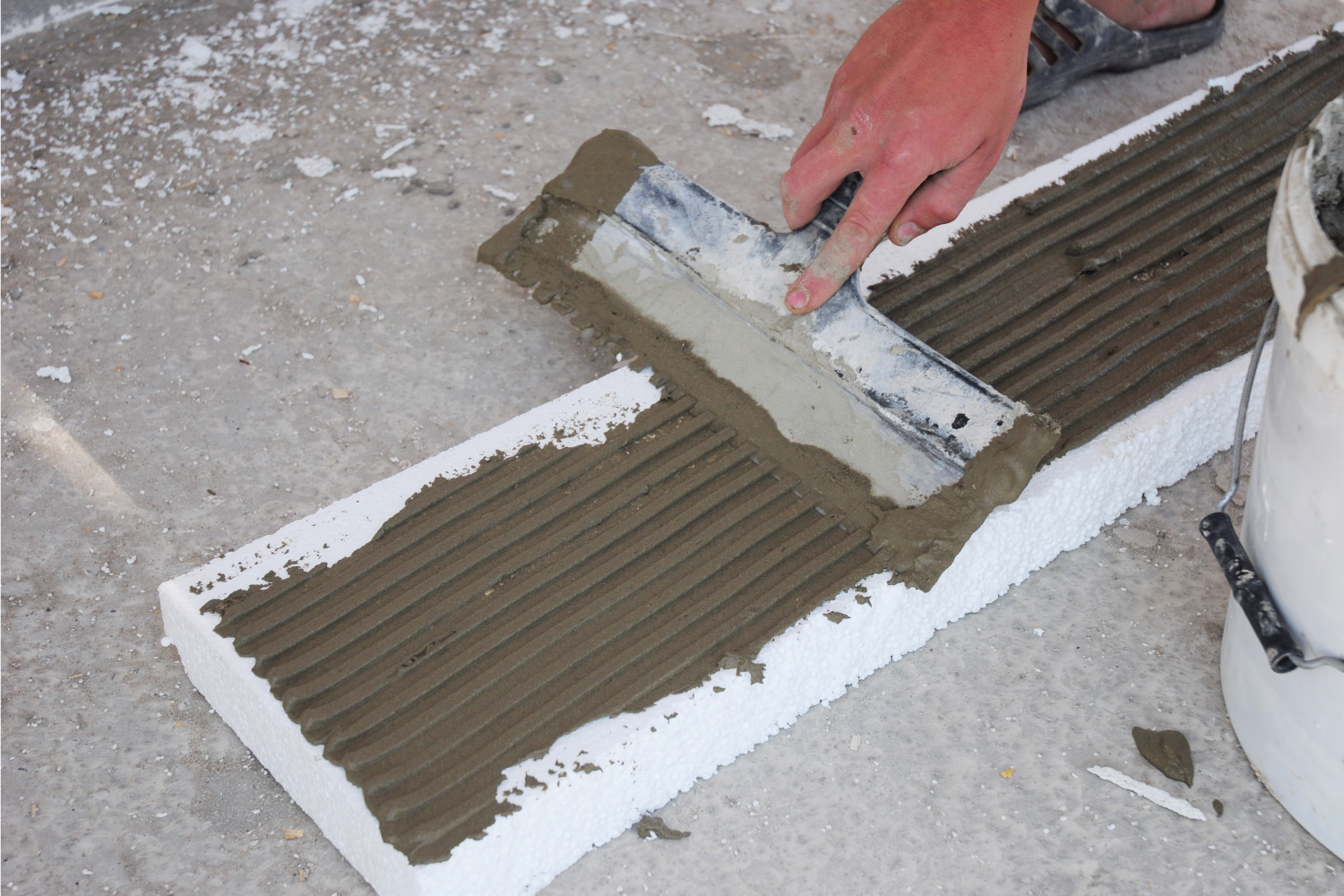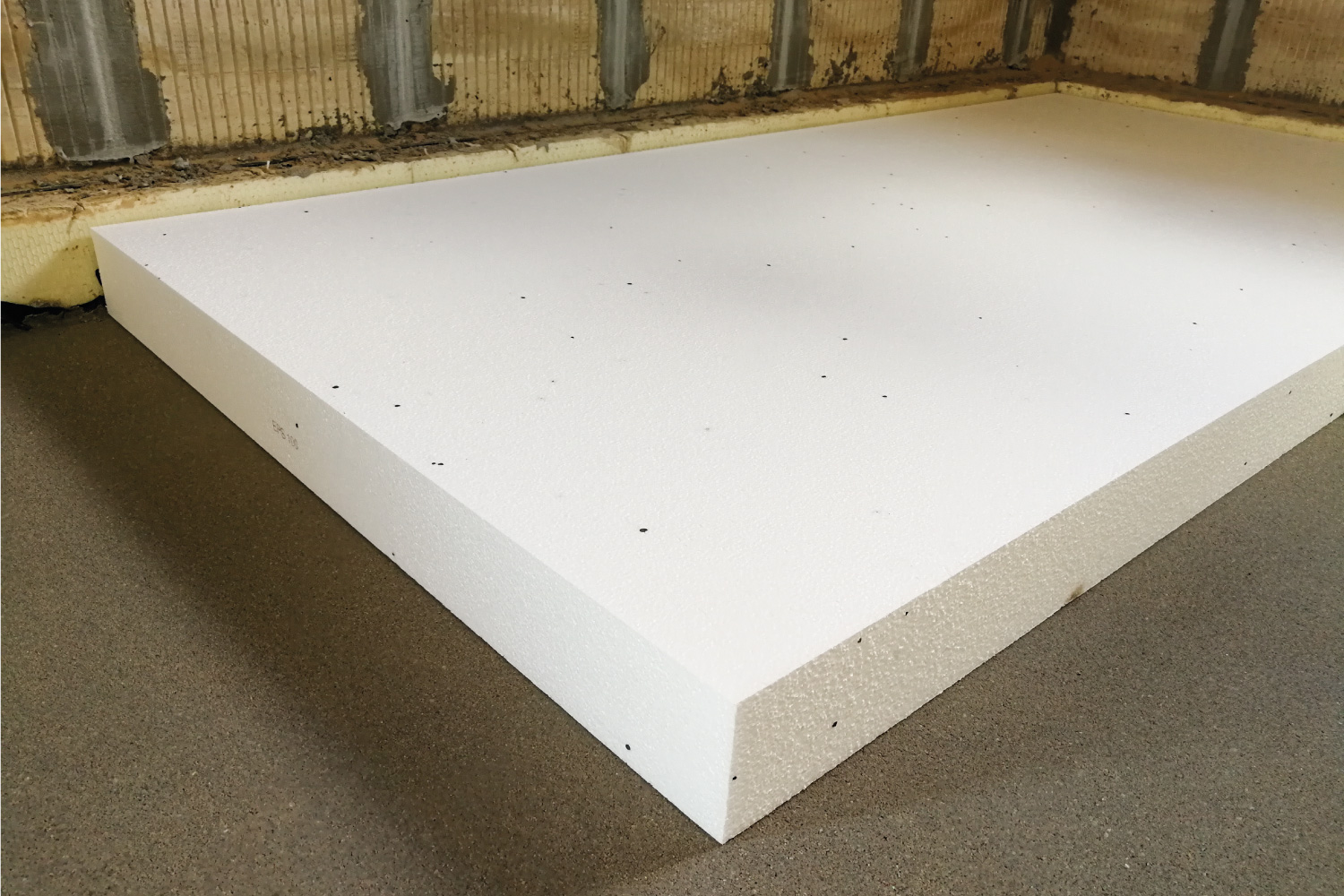As important as it is to keep your walls insulated, your floors should be as well. You'll definitely want to insulate the floors of a cold room. But if the room has a solid concrete floor, you're probably thinking of how thick you should make its insulation. After doing the research, we've found the answers to your questions.
Because concrete is solid, heat or air won't escape as easily as on other floors. Therefore, when adding insulation, keep it at least two inches thick, depending on the type of insulation you use.
Several factors go into how much insulation is needed on a concrete floor. Continue reading to learn these factors and other considerations before starting your home insulation project.

The Thickness of Concrete Floor Insulation
While concrete is a primary insulator against the elements, it won't help you out much in extreme weather. Therefore, it would be best if you add a layer of insulation to your concrete floor to help maintain your home's internal temperature and moisture level.
Several types of insulation pair well with concrete floors, but we'll discuss them a bit more later. The key is that you'll want your insulation to be at least two inches thick unless it's an insulation type with a high rating. First, let's discuss why concrete isn't a stand-alone insulator.
Why is Concrete a Bad Insulator?
Before deciding whether concrete is a bad or good insulation choice, you need to understand R-values. The U.S. Department of Energy explains that an R-value is a measurement of an insulation material's resistance to heat flow. It factors in the density and thickness of the insulation.
Why does that matter? Because the R-value of concrete is low. Granted, that also depends on how dense the concrete is. Its density plays a role in how much heat it can absorb.
In the colder months, concrete will absorb the heat from the outside, then slowly release it throughout the day. That's great if the floor gets a lot of sunlight. In the warmer months, the concrete will absorb the cool during the night to help counter the daytime heat.
However, that particular benefit is also concrete's downfall.
For example, if your home isn't entirely at a cool temperature in the summer, the concrete will absorb some of that summer heat. Throughout the day, that heat will release into the room, making it hotter than desired. Without proper ventilation or air conditioning, you'll be quite uncomfortable in that room.
The same goes for the wintertime. If that concrete-floored room isn't warm enough, the chills from the outside will seep into the concrete. Once that air releases, you'll probably need a blanket if you don't have heat flowing into the room.
For those two reasons, concrete by itself won't do well as an insulator. But that doesn't mean you should sway away from concrete altogether, though. Concrete can still block out harsh temperatures from entering your home if it's installed right.
It's just how it stores and releases heat or cold is what will give you trouble sometimes.
Is it Worth Insulating a Concrete Floor?
By itself, a concrete floor will give you the minimum insulation that you need to keep harsh weather out. It's strong enough to take on drafts or winds. It adds some energy efficiency to your home at an affordable cost.
Because of its heat or cold-absorbing properties, you may wonder if it's even worth adding insulation to the concrete floor. We're here to strongly suggest that you do insulate it.
Regardless of how decent concrete floors handle weather on their own, it won't make your room temperature optimal in certain seasons and climates.
We've already discussed how concrete might release heat in the summer or cool air from overnight during the winter. Homes, especially older ones, have basements with concrete floors and walls that sometimes aren't insulated. Fluctuating temperatures mean your home will lose an unpleasant amount of heat.
On top of that, despite how strong concrete is, it's actually easy for moisture to get in. Build Direct shares how moisture from the ground can seep through. Left untreated, this can cause mold and water damage to impact anything that's layered on top of concrete.
You'll get your money's worth by insulating concrete floors. That added layer will better help your floors keep out external moisture.
It'll also help to keep a room at a preferred temperature. Usually, it feels super cold when you walk on a concrete floor (or hardwood floor with concrete underneath). That extra insulation will prevent chilly floors, making them more comfortable for you to walk on.
To sum it up, adding insulation will make your floor comfier to walk on, protect the concrete from moisture penetration, and reduce heat loss during certain temperatures. Regardless of how much it costs, you'll see decent savings on your electricity bill in the long run.
What Kind of Insulation Should I Use Under a Concrete Floor?
Not all insulation performs the same. Some materials are better suited for walls, some for ceilings, and some for floors. Below are the types of insulation to use on your concrete floor.

Rigid Foam Board
You may also see XPS or extruded polystyrene; they're all the same thing.
Do you remember R-values? The heat flow resistance rating? Rigid foam board has a great R-value per inch of thickness. While there are varying thicknesses available, a thickness of two inches will give you an R10 rating.
Before we share the benefits of foam board, we will warn you that this kind of insulation is more pricey than the other insulation types we'll be mentioning. Remodeling Expense provides estimates showing that 2021 costs can range between $1.73 to $3.13 per square foot.
But with these high costs comes fantastic protection. Rigid foam is one of the best water-resistant insulations out there. If you live somewhere that occasionally floods, you won't have to tear out as much drywall to remove the mold. Because not only is it water-resistant, but it's also mold-resistant.
It's a high upfront cost with the potential for years of savings.

Expanded Polystyrene (EPS)
For an easy installation, you can look into expanded polystyrene. This material is made of foam beads. When exposed to heat, these beads grow and stick together. This closes off a chance for cold air to release.
Like rigid foam, this also has a good, long-lasting R-value. But it's more cost-friendly; EPS costs 19 cents per square foot.
At that price, you get some pretty great strength, too. However, some home improvement projects will require super-strong insulation. EPS may not be the best choice for that.
Where is the Most Heat Lost in a House?
Most typical households lose heat in one or more of these areas:
- Windows
- Doors
- Frame walls
- The basement
- Ceilings
Your home will lose the most heat through your windows or doors. That's because these locations are where you feel drafts the most.
These drafts appear because of cracks in the foundation. But they may be hard to see; the cracks can be less than an inch, yet still, let in cold air.
The best ways to counter drafts in your doors and windows are to apply foam or caulk to the cracks. For a stronger foundation, install weatherstripping. This helps keep unwanted air from entering through the parts of your windows or doors that move.
How Much Heat is Lost Through the Floor?
Your floors are the next source of the most heat loss in your home. Estimates from Home Heat Problems share that 10% of your home's heat is lost through the floors. That can change based on how old your home is; the older it is, the more heat your floors let escape.
If you install insulation with a good R-value, that will significantly reduce heat loss through your floors. Additionally, consider installing carpet; look for memory foam because it gets softer the more it's exposed to heat. You'll be able to walk on your now warm floors comfortably with carpet.
The Wrap Up
There are many kinds of floor insulation on the market to keep the heat in your home. When shopping, consider where you live: the weather/climate, how harsh are your winters and summers, and whether or not flooding is frequent.
The more you invest in quality insulation, the better your floors will resist not only heat loss but also mold and water penetration.
If you found this article useful, feel free to glance at some of our other articles:
Does Drywall Add R-Value And Help Insulate?
How To Insulate A Wooden Front Door—6 Methods For Improvement

HI there,
What are your cement subfloor insulation “best practices” when installing electric floor heat mats?